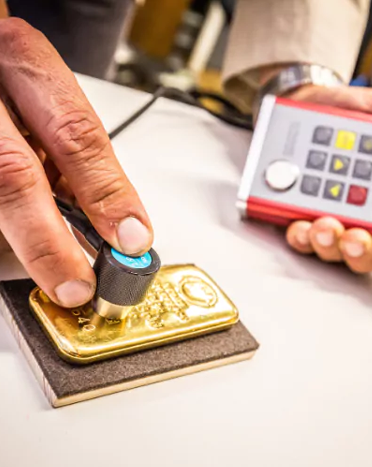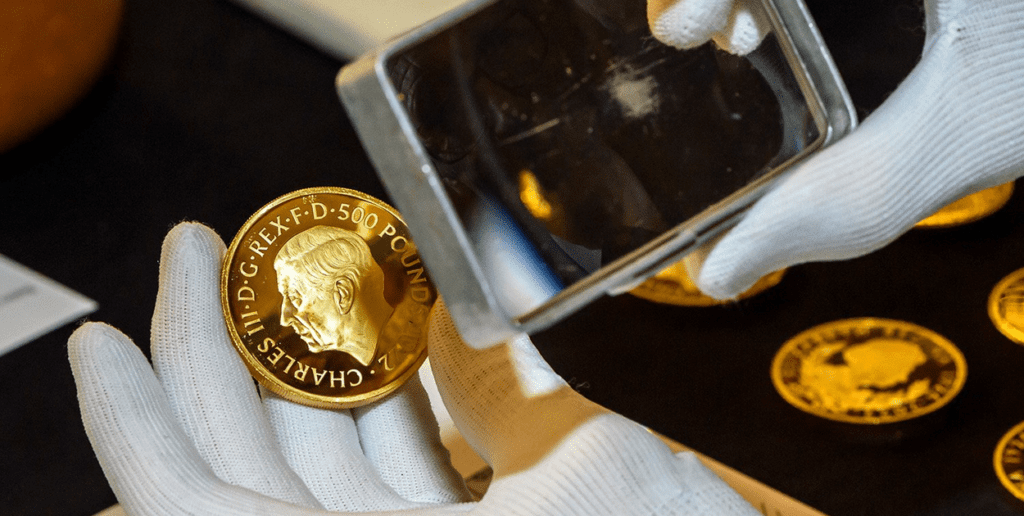Determining whether your gold is genuine can save you time and money. While professional appraisals are the most accurate, there are several simple tests you can perform at home to check for real gold. Here’s a guide to DIY gold tests and how they compare to professional appraisals.
Simple Home Tests to Check for Real Gold
 The Magnet Test:
The Magnet Test:- How it Works: Gold is not magnetic. To perform this test, simply hold a magnet close to your gold item.
- What to Look For: If the item sticks to the magnet, it is likely not real gold. However, if it does not stick, it could be real gold or another non-magnetic metal.
- The Float Test:
- How it Works: Real gold is dense and will sink in water.
- What to Look For: Fill a bowl with water and gently drop your gold item in. If it sinks to the bottom, it is more likely to be real gold. If it floats or hovers, it is likely fake or gold-plated.
- The Scratch Test:
- How it Works: Gold is a soft metal that will leave a mark on a piece of unglazed ceramic.
- What to Look For: Rub your gold item against a piece of unglazed ceramic tile. If it leaves a gold streak, it is likely real gold. If the streak is black or gray, it is not real gold.
- The Vinegar Test:
- How it Works: Gold does not react with vinegar.
- What to Look For: Place a few drops of vinegar on your gold item. If the metal changes color or reacts, it is not real gold. Real gold will remain unaffected.
- The Nitric Acid Test:
- How it Works: Nitric acid does not affect real gold.
- What to Look For: Carefully apply a small drop of nitric acid to a tiny scratch on the item. If the metal turns green or reacts, it is not real gold. If there is no reaction, it is likely real gold. Note: This test involves handling acid and should be done with caution.
Comparing DIY Methods with Professional Appraisals
 While DIY tests can give you a good indication of whether your gold is real, they are not foolproof. Here’s how they compare to professional appraisals:
While DIY tests can give you a good indication of whether your gold is real, they are not foolproof. Here’s how they compare to professional appraisals:
- Accuracy: Professional appraisals are far more accurate. Jewelers and appraisers use specialized equipment and techniques, such as X-ray fluorescence (XRF) analysis, to determine the exact composition of the metal.
- Detailed Information: A professional appraisal will provide detailed information about your gold item, including its weight, purity, and value. DIY tests can only give you a basic idea of whether the gold is real.
- Expertise: Professional appraisers have the expertise to identify and evaluate gold items accurately. They can also detect sophisticated fakes that might pass DIY tests.
- Certification: Many professional appraisers can provide a certificate of authenticity, which can be valuable if you decide to sell your gold.
Conclusion
Performing simple tests at home can help you determine if your gold is real, but they are not as reliable as a professional appraisal. For the most accurate and detailed evaluation, consider having your gold items appraised by a professional.
For expert appraisals and to ensure you get the best value for your gold, visit Houston Cash for Gold today!

 The Magnet Test:
The Magnet Test: